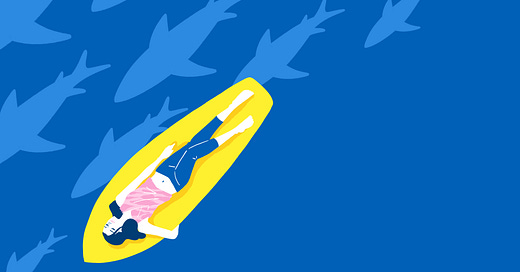人工物は自然を壊すと思われることも多いですが、一概にそうとも言えず、思わぬところで生き物の生息地に・・・といった例は結構ありますよね。釣り好きな方はピンと来られたかもしれませんが、消波ブロック(テトラポッド)は魚のマンションと呼ばれていて、ブロックに住み着いたカニやゴカイ、貝類を狙って魚もやってくるそうです。今回は、海上風力発電がサメやエイの生息地になっているというニュースをご紹介します。持続可能な社会を目指して作った人工物に必ず付いて回るのは、景観や生態系に悪影響を及ぼすのではという懸念。それが生息地となるならとても嬉しいニュースです。ただもちろん良い影響だけではないので、細かなリサーチやさまざまな工夫が必要になってきます。むしろ人と自然の共存できる斬新なアイデアが、新しいビジネスを産むきっかけになるかもしれませんね。
海上風力発電所が、 サメやエイの生息地に!?(オランダ・自然)
オランダの海上風力発電所周辺で、サメやエイの5種が生息していることが、ワーヘニンゲン大学の研究により確認された。 海上風力発電の建設は、生物の生息地を奪うのでは?という懸念がされていたが、実際は漁業が一定期間禁止されたことで、 逆に生物が戻ってくるという現象が起こっているそうだ。餌を探したり産卵したりするために海底を頻繁に利用するサメやエ イにとっては良い環境だったと言えるかもしれない。この発見は、海上風力発電所がエネルギー供給だけでなく、海洋生物の保護にも寄与する可能性を示唆している。しかしこれは一時的なものかもしれず、今後は、電磁場がこれらの種に与える影響 や、風力発電所の設置が生態系に及ぼす長期的な効果について、さらなる研究が求められている。
ENG↓
Offshore Wind Farms: A New Haven for Sharks and Rays? (The Netherlands / Nature)
A study by Wageningen University has confirmed the presence of five species of sharks and rays around offshore wind farms in the Netherlands. While there were concerns that the construction of offshore wind farms might destroy natural habitats, the opposite appears to be happening: restrictions on fishing activities in these areas have allowed marine life to return. For sharks and rays, which frequently use the seabed to forage and breed, the environment seems to offer favourable conditions. This discovery suggests that offshore wind farms could play a role not only in supplying renewable energy, but also in supporting marine conservation.
However, this may only be a temporary phenomenon. Further research is needed to understand the long-term ecological impacts of wind farm installations and the potential effects of electromagnetic fields on these species.





